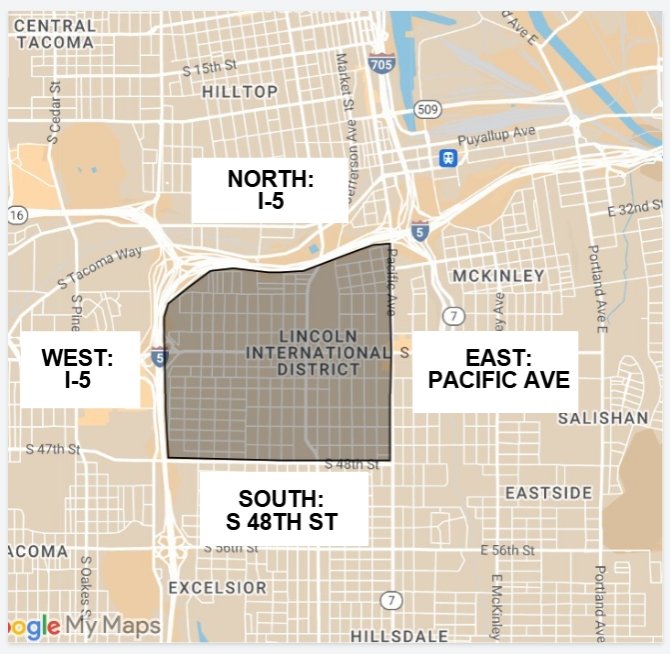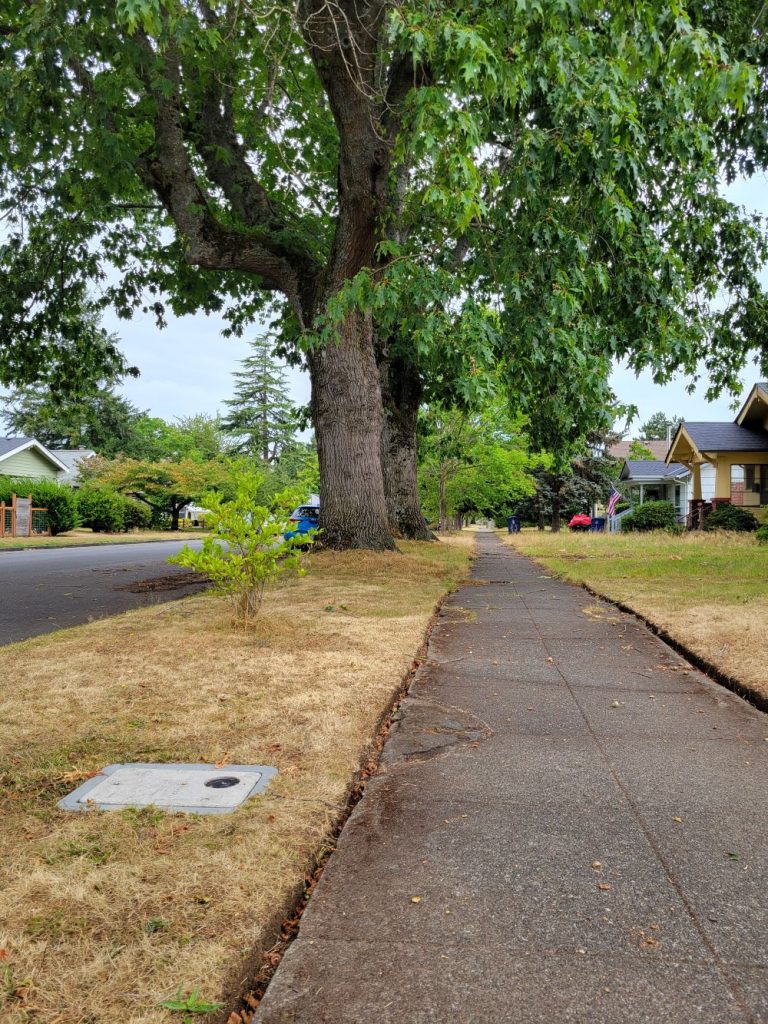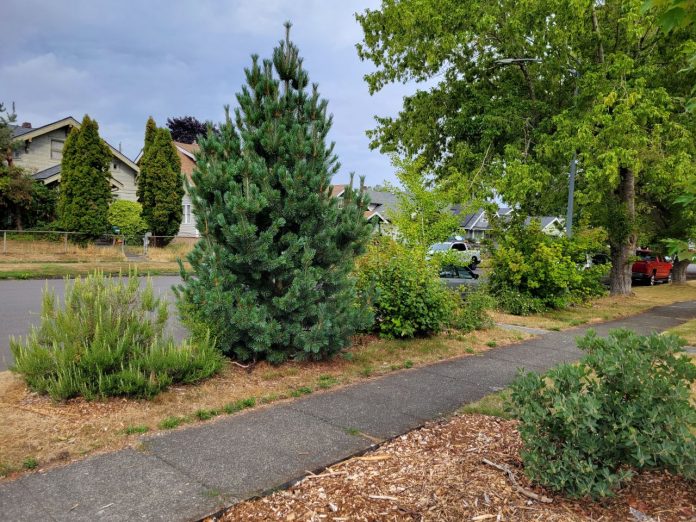
The Tacoma Tree Foundation (TTF) recently announced the latest expansion of their Green Blocks program, expanding into the Lincoln International District in Tacoma’s South End in October.
The Green Blocks program is a community-centered initiative by the Tree Foundation to bring free street trees directly to neighborhood residents, planting the seeds of greater tree canopy coverage in areas of Tacoma most lacking it. The program seeks to reduce barriers to tree planting and foster stewardship among Tacoma residents. Increasing Tacoma’s tree canopy coverage helps combat the urban heat island effect, which exacerbates the health impacts of heat waves and worsens livability in urban areas.
Tacoma’s current tree canopy covers less than 20% of the city, the lowest among Puget Sound cities allowing concrete and structures throughout the city to absorb and radiate heat unobstructed.
TTF, in partnership with the City’s Urban Forestry program, selected Lincoln District as the next neighborhood to focus Green Blocks efforts in. The Lincoln District was selected based on the City’s new Tree Planting Priority Tool, which combines multiple datasets including the Tacoma Equity Index, Urban Heat Island Index, existing tree canopy and others to identify neighborhoods that have the highest need for trees.
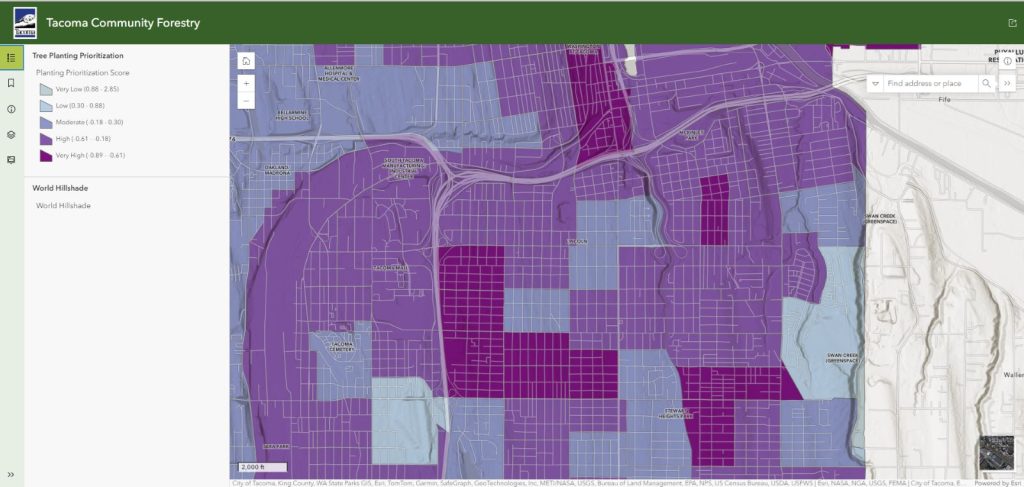
Building up the Right-of-Way
While the Green Blocks program is intended for residents that have barriers to accessing and planting trees, the City encourages those who can purchase from commercial nurseries to do so. Residents can apply for a Tree Coupon through the City to get up to $30 discounted for up to three trees. Additionally, the trees are intended for the right-of-way in between streets and properties — in other words, Green Blocks trees are meant to line our streets and sidewalks. Trees intended for planting on private property can be obtained through TTF’s other tree shares, which occur from October through March depending on available saplings.
By partnering with the City of Tacoma’s Urban Forestry program, these trees come at no cost to residents; they just need to request to reserve free trees for themselves and care for their trees in those critical first few years. TTF will even provide volunteers to help those approved for trees plant a new tree on their property. This year’s expansion comes after programs in the Tacoma Mall, Parkland, and Mckinley Hill neighborhoods, which add to the nearly 3,000 trees planted through TTF city-wide in 2023, demonstrating how successful Tacoma Tree Foundation has been in cultivating their program throughout communities.
Lincoln residents can request trees until September 16th, to allow for processing and delivery of trees the following month. TTF and City staff will review applications alongside the property’s characteristics to ensure enough plantable space and minimal interference with underground and overhead utilities. TTF is aiming to distribute at least 300 trees to 120 homes in Lincoln District; the program’s boundaries are illustrated on the map below.
The program is intended for property owners. Renters may request trees, but will have to work with their landlords to obtain permission to plant.
Based on my personal experience, landlords may be hesitant to grant permission. In hopes of obtaining a tree through the Branch Out Program, an annual tree distribution for all Tacoma neighborhoods, I sought permission from my landlord and offered to do all the planting and care myself. My landlord declined, citing the risk of the tree falling and damaging the property sometime in the future. While I understand their reasoning, it is frustrating to not be allowed to contribute to a more expansive urban tree canopy as a non-property owner.
Those approved for street trees can expect to receive:
- Deciduous or evergreen trees, depending on availability (Specific types cannot be guaranteed)
- Tree planting/care guidelines
- Water bag
Additionally, TTF will host tree stewards training in September to help educate community members on how to care for these young trees, alongside deploying volunteers in late October to assist homeowners in planting. You do not need to be a Lincoln resident to participate in either of these events.
Rooted in the Community
TTF recognizes that every neighborhood has unique characteristics and requires unique approaches to get community members invested in tree cultivation.
For example, Parkland has wide right-of-ways with minimal restrictions due to being a part of unincorporated Pierce County. A partnership with Pierce County, has allowed greater flexibility and opportunity to add trees throughout Parkland’s residential streets. This program is expected to extend multiple years thanks to a continued drive from Pierce County to improve the tree canopy in its unincorporated areas with low tree equity.
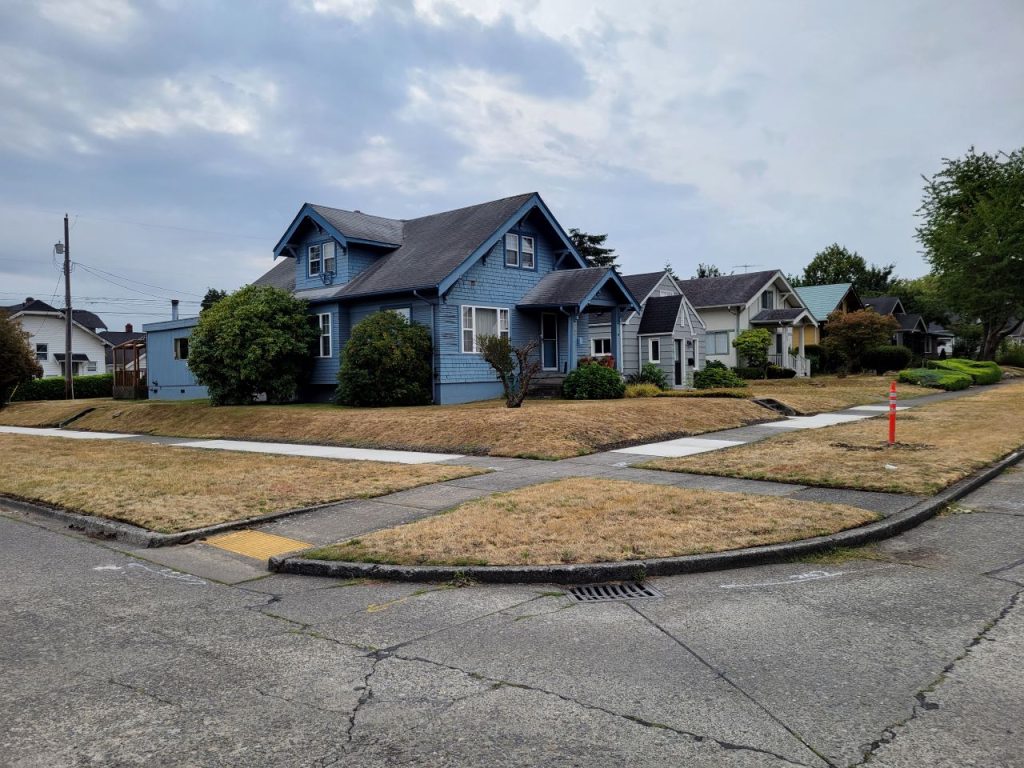
Conversely, the Tacoma Mall neighborhood, where the Green Blocks Program first launched, is heavily paved with narrower right-of-ways and greater restrictions due to city regulations and existing infrastructure. In addition, a significant portion of the neighborhood is composed of large apartment complexes that require the cooperation of institutional landlords to expand canopy.
TTF sees significant opportunity in Lincoln District. Many of the residential roads have wide planting strips and plenty of space for trees. Some planting strips are even completely full of trees and cannot accommodate more. TTF executive director Lowell Wyse said he sees those well-canopied streets as a huge strength, showing some community members already know and have bought into the benefits of street trees and so can be used to bring their neighbors into the fold.
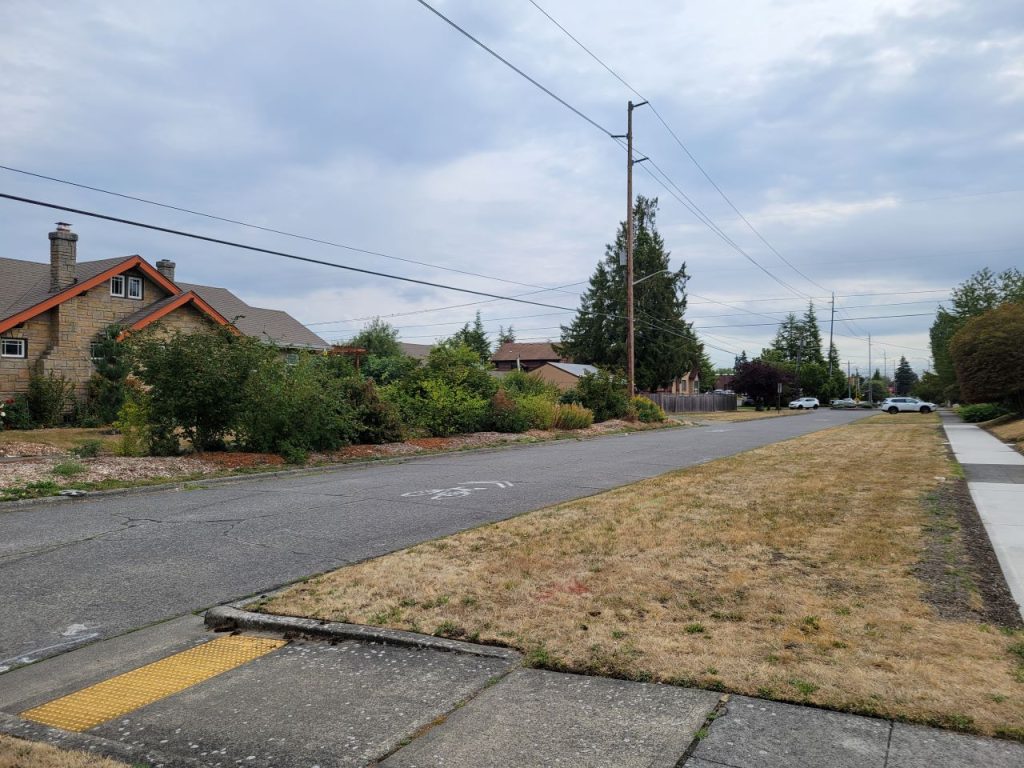
Wyse said that the success of each Green Blocks program hinges on community investment and mobilization, nurturing neighborhood pride and mutual care. The energy and excitement of engaged community members have helped drive the programs past many expectations, Wyse said.
The Lincoln District has a large Vietnamese population. As a child of Vietnamese immigrants myself, one of my main questions was how TTF planned to bridge the cultural and language barriers. Lowell spoke honestly and said that while TTF knows of the existing language barriers, it simply does not have the internal resources to provide dedicated cultural ambassadors or translated materials, as much as it would want to. TTF sees the shortfall and hopes to correct it in future programming.
The annual Branch Out program does provide resources in English, Spanish, Vietnamese, Russian and Ukrainian, as well as multiple language ambassadors to help meet community members where they are. Each of the language groups mentioned above had at least one entire family participating in 2023, Wyse said.
The Tacoma Tree Foundation is hosting an outreach and information event on September 3rd at Whitman Elementary to share information about the Green Blocks program and solicit volunteers to help with community outreach.
Reaching Towards the Sun
Looking to the future, the Tacoma Tree Foundation has huge aspirations. TTF was recently approved for a three-year state urban and community forestry grant to bring the Green Blocks program to the historically underserved Hilltop neighborhood, Wyse said. TTF will begin internal program planning for Hilltop later this fall. The grant will contribute to TTF’s overall goal of having a continuous presence in every high-need Tacoma neighborhood year-round, rather than the current practice of switching focus every year.
Wyse also hopes to continue engagement in previous Green Blocks neighborhoods, as a single round of planting is not enough to build a resilient tree canopy. Building upon existing giveaway and planting resources, TTF eventually plans to offer watering and monitoring services to ensure the planted trees are able to reach maturity.
As TTF works to improve Tacoma’s urban forest, the regulatory conditions of the city are changing. In December 2023, the City Council passed a new street tree ordinance that Wyse described as “making it easier to plant trees in the right of way while making it more difficult to remove them.” The ordinance went into effect in June, and it is too early to say if there has been significant impact yet.
On a larger scale, Tacoma’s housing regulation overhaul, Home in Tacoma, has reached its final stages before becoming law. The Tacoma Planning Commission provided a final set of recommendations to the City Council in June, with a vote planned for October. In the package are multiple new ordinances related to the preservation and replacement of existing property trees in redeveloping properties, such as to construct a new apartment building or a detached accessory dwelling unit.
Wyse sees the proposed tree regulations as a massive step forward, as such restrictions did not previously exist, but he was concerned about the enforcement of the policies. He pointed to shortfalls in current enforcement by the City, in addition to a lack of regulatory teeth in the Home in Tacoma package that developers may take advantage of. He did admit the difficult and intricate balance of allowing increased housing density alongside preservation or replacement of mature trees.
To learn more about the Tacoma Tree Foundation, its programming and upcoming events, visit their website.
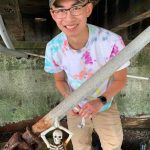
Kevin Le
Kevin Le is a Geographic Information Science (GIS) professional in Tacoma. He enjoys studying spatial data to better understand our urban landscapes and redesign cities to better serve all people.

